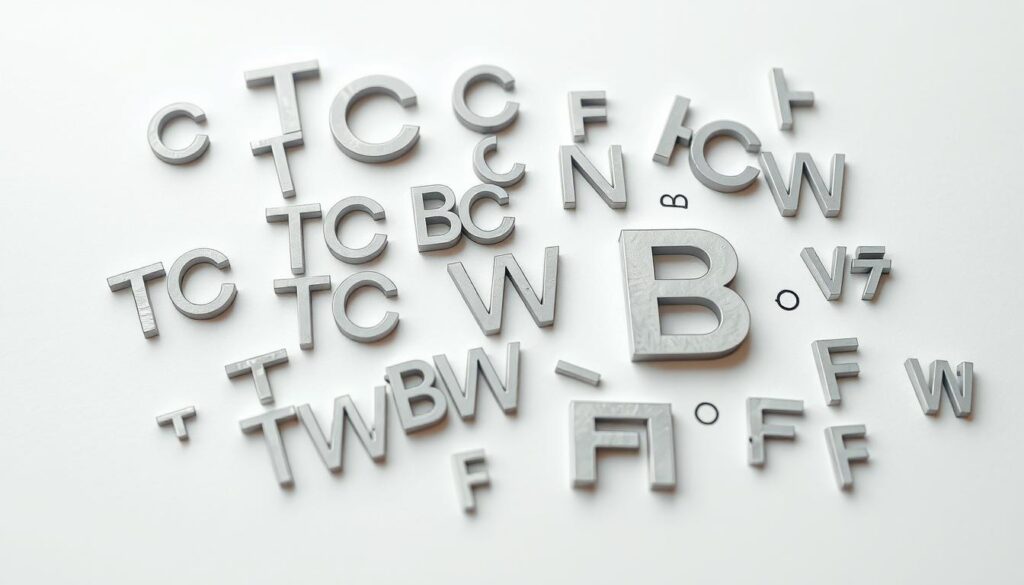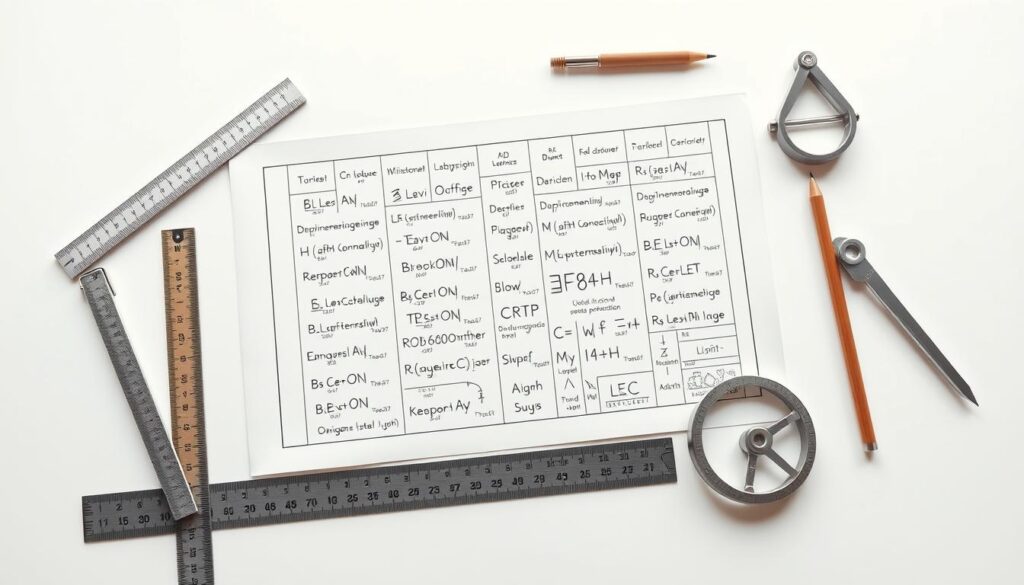Civil drawings are a crucial part of construction projects, serving as the blueprint for builders and engineers. However, these drawings often contain abbreviations that can be confusing to those not familiar with them.
TC and BC are two such abbreviations that play significant roles in civil engineering. Understanding their meanings is essential for accurately interpreting civil drawings.
These abbreviations are part of a broader set of civil engineering abbreviations used to simplify the representation of complex information on drawings. Familiarity with these terms can significantly enhance the efficiency of construction projects.
Key Takeaways
- TC and BC are crucial abbreviations in civil drawings.
- Understanding these terms is vital for accurate project execution.
- Civil engineering abbreviations simplify complex information.
- Familiarity with these abbreviations enhances construction efficiency.
- Civil drawings serve as essential blueprints for construction projects.
Understanding Civil Engineering Drawings
Understanding civil engineering drawings is essential for successful project execution, and standardized abbreviations play a key role. Civil engineering drawings serve as the blueprint for construction projects, providing detailed information necessary for execution.
The Importance of Standardized Abbreviations
Standardized abbreviations in civil engineering drawings ensure that all stakeholders, from engineers to contractors, are on the same page. Abbreviations like TC and BC are crucial for conveying specific details about construction elements, such as curbs. The use of standardized abbreviations minimizes misunderstandings and errors, thereby streamlining the construction process.
For instance, without a universal understanding of these abbreviations, a simple misinterpretation could lead to significant project delays. Thus, the importance of standardized abbreviations cannot be overstated in the context of civil engineering drawings.
Common Types of Civil Drawings
Civil engineering encompasses various types of drawings, each serving a specific purpose. Some of the most common include:
- Grading plans, which detail the terrain modifications necessary for construction.
- Drainage plans, crucial for managing water flow and preventing accumulation on construction sites.
- Site plans, which provide an overall view of the construction project, including the placement of buildings and infrastructure.
These drawings, rich in abbreviations and symbols, are indispensable for the successful execution of construction projects. Understanding the different types of civil drawings and their respective abbreviations is vital for anyone involved in the construction industry.
What Does TC Mean on Civil Drawings?
The world of civil engineering is rich with acronyms, and TC is one of the most significant. When working with civil drawings, understanding what TC stands for and its implications is crucial for the success of a project.
Definition of Top of Curb
TC stands for “Top of Curb,” referring to the elevation at the top surface of a curb. This measurement is vital in construction projects as it helps determine the height of the curb relative to the surrounding terrain or road surface. The Top of Curb is a reference point used in grading and drainage plans to ensure that water flows as intended and that the curb is constructed to the correct height.
Where TC Markings Are Typically Found
TC markings are typically found on civil drawings related to roadway construction, parking lots, and other infrastructure projects where curbs are a component. These drawings often include detailed cross-sections and profiles that specify the TC elevation. Understanding these markings is essential for contractors and engineers to ensure that the curb is built to the correct specifications.
Significance in Construction Projects
The significance of TC in construction projects cannot be overstated. It is used to ensure that the curb is constructed at the correct elevation, which is critical for both drainage and accessibility. Proper curb design, including the correct TC elevation, helps prevent water from accumulating on roadways or sidewalks, reducing the risk of erosion and improving safety. Moreover, it ensures compliance with ADA (Americans with Disabilities Act) requirements by providing a smooth transition between different surfaces.
In summary, TC or “Top of Curb” is a fundamental element in civil drawings that directly impacts the design and functionality of curbs in various construction projects. Its accurate interpretation and implementation are crucial for ensuring that projects are executed correctly, safely, and in compliance with relevant regulations.
What Does BC Mean on Civil Drawings?
BC, or Bottom of Curb, is a key reference point in construction projects involving curbs. Understanding its meaning and significance is crucial for civil engineers and contractors to ensure accurate curb installation.
Definition of Bottom of Curb
The Bottom of Curb (BC) refers to the lowest point of the curb, which is a critical measurement for determining the height and design of the curb. This measurement is essential for ensuring that the curb is properly aligned with the surrounding terrain and that it functions correctly in terms of drainage and accessibility.
Where BC Markings Are Typically Found
BC markings are typically found on civil drawings that detail curb designs, such as:
- Site plans
- Grading plans
- Drainage plans
- Roadway and street design plans
These plans often include detailed cross-sections and profiles that show the BC in relation to other key features like the top of curb (TC), flow lines, and edge of pavement.
Significance in Construction Projects
The BC marking plays a vital role in construction projects by:
- Ensuring accurate curb installation
- Facilitating proper drainage
- Enhancing accessibility by providing a smooth transition between different surfaces
In summary, understanding BC in civil drawings is essential for the successful execution of construction projects involving curbs. It ensures that the curb is installed correctly, functions as intended, and meets the required standards for drainage and accessibility.
The Relationship Between TC and BC in Curb Design
The synergy between TC and BC is essential for achieving proper curb height and ensuring effective drainage in construction projects. Curb design is not just about aesthetics; it’s a critical component of road safety and water management.
Curb Height and Design Considerations
Curb height is determined by the difference between the TC and BC measurements. This height is crucial for several reasons, including safety, drainage, and accessibility. A well-designed curb must balance these factors to ensure that it serves its purpose effectively.
- Proper curb height helps prevent vehicles from leaving the roadway and reduces the risk of accidents.
- Effective drainage is achieved when the curb is designed to direct water flow appropriately, reducing the risk of flooding.
- Accessibility is enhanced when curbs are designed with ramps and other features that facilitate easy passage for pedestrians, including those with disabilities.
How TC and BC Work Together in Construction
In construction plans, TC and BC are used in tandem to specify the exact dimensions and placement of curbs. This ensures that the constructed curb meets the design specifications, including the correct height and slope.
To illustrate, consider a construction project where the TC is specified at 10 inches above the finished grade, and the BC is 6 inches below the TC. The curb height would be 4 inches (10 inches – 6 inches), which is a critical dimension for both drainage calculations and ensuring the curb is not too high or too low for safety.
By understanding and accurately implementing TC and BC in curb design, construction teams can ensure that their projects meet both functional and regulatory requirements, ultimately contributing to safer and more sustainable infrastructure.
TC and BC in Grading and Drainage Plans
In civil engineering, the accurate representation of curb elevations is crucial for effective grading and drainage plans. Grading plans determine the site’s topography, while drainage plans ensure that water flows away from structures and pedestrian areas. Both plans rely heavily on the precise notation of TC (Top of Curb) and BC (Bottom of Curb) to establish site elevations and manage water flow.
Establishing Site Elevations Using TC and BC
TC and BC are essential in establishing site elevations, as they provide critical reference points for grading and drainage design. By accurately noting these elevations, engineers can:
- Determine the slope and gradient of the site
- Ensure proper drainage away from buildings and walkways
- Design effective curb and gutter systems
Drainage Calculations and Water Flow Considerations
Drainage calculations are critical in ensuring that water flows properly across the site. TC and BC elevations are used to determine the flow rate and direction of water, helping engineers to:
- Design stormwater management systems
- Prevent erosion and sedimentation
- Ensure compliance with local regulations and standards
Accurate drainage calculations also involve considering factors such as rainfall intensity, soil type, and surface roughness.
ADA Compliance and Accessibility Requirements
In addition to their role in grading and drainage, TC and BC elevations also impact ADA compliance and accessibility. Curb ramps and pedestrian areas must be designed to meet specific standards, including:
- Slope and gradient requirements
- Curb ramp design and placement
- Surface texture and detectability
By accurately representing TC and BC elevations, engineers can ensure that their designs meet ADA requirements, providing safe and accessible pathways for all users.
Other Related Abbreviations in Civil Drawings
Beyond TC and BC, several other abbreviations play a vital role in civil drawings, particularly in curb design. Understanding these terms is essential for effective communication among engineers, contractors, and construction professionals.

FL (Flow Line) and Its Relationship to BC
The Flow Line (FL) is another critical abbreviation in civil drawings, especially in drainage design. It refers to the lowest point in a channel or conduit where water flows. The FL is closely related to the Bottom of Curb (BC) as it often coincides with the BC in curb and gutter designs. This relationship is crucial for ensuring proper drainage and preventing water accumulation on roadways or other surfaces.
“The alignment of FL with BC is fundamental to effective stormwater management.” This alignment ensures that water flows freely and doesn’t accumulate, reducing the risk of flooding and erosion. In some designs, the FL might be slightly lower than the BC to facilitate better drainage.
EC (Edge of Curb) and FC (Face of Curb)
Two other important abbreviations in curb design are EC (Edge of Curb) and FC (Face of Curb). The Edge of Curb (EC) refers to the edge where the curb meets the adjacent surface, such as a road or sidewalk. The Face of Curb (FC) is the vertical surface of the curb that is visible when looking at the curb from the side. Understanding the distinction between EC and FC is vital for accurate curb installation and ensuring compliance with design specifications.
- EC is used as a reference point for measuring distances and determining the curb’s position relative to other features.
- FC is critical for determining the curb’s height and appearance.
Additional Common Curb-Related Abbreviations
Other abbreviations that are frequently encountered in civil drawings related to curb design include:
- TG (Top of Gutter): Refers to the highest point of the gutter.
- EP (Edge of Pavement): Indicates the edge of the paved surface.
- FB (Face of Barrier): Refers to the surface of a barrier, such as a concrete barrier.
These abbreviations, along with TC, BC, FL, EC, and FC, form a comprehensive vocabulary that is essential for professionals working on civil engineering projects. Familiarity with these terms can significantly improve communication, reduce errors, and enhance overall project efficiency.
How to Interpret TC and BC on Different Types of Projects
Different projects require a nuanced understanding of TC and BC to ensure proper execution. In construction, accurately interpreting these elements is essential for project success across various infrastructure types.
Roadway and Street Design
In roadway and street design, TC and BC are critical for establishing the curb’s position and elevation. This information is vital for determining drainage patterns and ensuring that water flows away from the road surface. Proper interpretation of TC and BC helps in designing roads that are both safe and functional.
Key considerations include:
- Ensuring proper drainage to prevent water accumulation
- Designing curbs that are safe for pedestrians and vehicles
- Meeting local regulations and standards for roadway construction
Parking Lot Construction
In parking lot construction, understanding TC and BC is necessary for grading and drainage purposes. The top and bottom of curb elevations influence how water is directed across the parking area, affecting both the surface quality and the structural integrity of the lot.
Important factors to consider:
- Grading to ensure water flows towards drainage points
- Designing curbs that can withstand vehicular traffic
- Compliance with accessibility standards for parking lot design
Sidewalks and Pedestrian Areas
For sidewalks and pedestrian areas, TC and BC play a crucial role in ensuring accessibility and safety. Proper curb design facilitates smooth transitions between sidewalk and street levels, enhancing pedestrian experience.
Best practices include:
- Designing curbs with detectable warnings for visually impaired pedestrians
- Ensuring curb ramps meet ADA compliance standards
- Maintaining consistent curb heights for safety
Drainage and Stormwater Management
In drainage and stormwater management projects, TC and BC are fundamental to calculating flow rates and designing effective drainage systems. Understanding these elements helps engineers manage stormwater runoff efficiently, reducing the risk of flooding and erosion.
Key aspects to focus on:
- Accurate calculation of stormwater flow based on TC and BC
- Designing drainage systems that can handle heavy rainfall events
- Incorporating green infrastructure to mitigate stormwater impacts
Digital Representation of TC and BC in Modern CAD Systems
Modern CAD systems have transformed the representation of TC and BC, offering enhanced precision and collaboration in civil engineering projects. This digital shift has not only streamlined the design process but also improved the accuracy of curb designs, which are critical in various infrastructure projects.

CAD Standards for Curb Notation
CAD standards play a vital role in ensuring consistency in the representation of TC and BC across different projects and teams. These standards often include specific guidelines on layering, symbology, and annotation, which help in maintaining clarity and reducing confusion. For instance, using standardized layer names for curb features allows for easier identification and manipulation of these elements within the design.
Some key aspects of CAD standards for curb notation include:
- Layer naming conventions
- Symbol libraries for curb features
- Annotation styles for TC and BC
3D Modeling and BIM Integration
The integration of 3D modeling and Building Information Modeling (BIM) has further enhanced the representation of TC and BC in civil engineering. BIM allows for the creation of detailed, data-rich models that include not just geometric information but also functional and performance data related to curb designs.
This integration enables:
- Enhanced visualization of curb designs in the context of the overall project
- Improved clash detection and resolution during the design phase
- Better collaboration among stakeholders through shared models
Software Tools for Civil Engineers
Civil engineers utilize a variety of software tools to create, analyze, and manage designs involving TC and BC. Some of the popular software includes Autodesk Civil 3D, Bentley Systems’ OpenRoads, and Trimble’s Business Center – Civil Construction.
“The use of advanced CAD and BIM tools has revolutionized the field of civil engineering, enabling more complex and accurate designs.” –
These software tools offer advanced features such as:
- Automated curb design and grading
- Detailed surface modeling
- Integration with other project management tools
Conclusion
Understanding the meaning of TC and BC on civil drawings is crucial for accurate and effective construction projects. These abbreviations play a significant role in curb design, grading, and drainage plans, ensuring that projects are executed as intended.
By grasping the concepts of TC (Top of Curb) and BC (Bottom of Curb), civil engineers and contractors can better navigate complex construction projects, from roadway design to parking lot construction. The use of standardized abbreviations like TC and BC facilitates clear communication among stakeholders, reducing the risk of errors and misinterpretations.
As the construction industry continues to evolve with advancements in CAD systems and 3D modeling, the importance of understanding these fundamental concepts remains unchanged. By mastering the meaning and application of TC and BC in civil drawings, professionals can ensure that their projects meet the required standards and regulations, ultimately contributing to safer and more efficient infrastructure.
